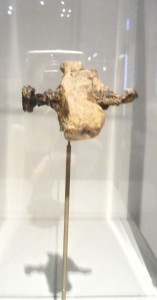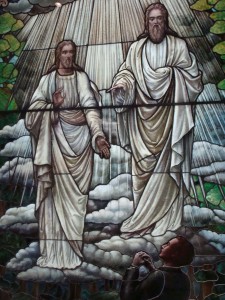 At the October 1961 general conference of the Mormon Church Gordon B. Hinckley said,
At the October 1961 general conference of the Mormon Church Gordon B. Hinckley said,
“I would like to say that this cause is either true or false. Either this is the kingdom of God, or it is a sham and a delusion. Either Joseph talked with the Father and the Son, or he did not. If he did not, we are engaged in blasphemy” (Conference Reports, October 1961, 116).
President Hinckley held a strong, lifelong conviction that the validity of Mormonism rested on the truth of Joseph Smith’s First Vision.
“There is no middle ground. Joseph Smith talked with the Father and the Son or he didn’t. If he didn’t, then we are embraced in a great fraud, a terrible fraud.” (“Counsel from the Prophet,” Church News, 4/27/96, 4)
“Our whole strength rests on the validity of that vision. It either occurred or it did not occur. If it did not, then this work is a fraud… upon that unique and wonderful experience stands the validity of this church” (“The Marvelous Foundation of our Faith,” Ensign [Conference Edition], November 2002, 80)
“You and I are faced with the stark question of accepting the truth of the First Vision and that which followed it. On the question of its reality lies the very validity of this Church.” (“The Stone Cut Out of the Mountain,” Ensign [Conference Edition], November 2007, 86)
“That becomes the hinge pin on which this whole cause turns. If the First Vision was true, if it actually happened, then the Book of Mormon is true. Then we have the priesthood. Then we have the Church organization and all of the other keys and blessings of authority which we say we have. If the First Vision did not occur, then we are involved in a great sham. It is just that simple.” (Teachings of Gordon B. Hinckley, 227)
President Hinckley taught that the First Vision is “the hinge pin,” the “whole strength” upon which rests the “very validity of this Church.” He apparently placed much more value in the event than did Joseph Smith and the early Mormon Church. According to Mormon historian James B. Allen, Joseph Smith’s First Vision wasn’t even mentioned in “contemporary writings about Joseph Smith in the 1830’s,” or in “publications of the Church in that decade,” or in “contemporary journal or correspondence yet discovered…” (“The significance of Joseph Smith’s ‘First Vision’ in Mormon Thought,” Dialogue: A Journal of Mormon Thought, Autumn 1966, 31).
Mr. Allen’s research revealed,
“As far as Mormon literature is concerned, there was apparently no reference to Joseph Smith’s first vision in any published material in the 1830’s. Joseph Smith’s history, which was begun in 1838, was not published until it ran serially in the Times and Seasons in 1842. The famous “Wentworth Letter,” which contained a much less detailed account of the vision, appeared March 1, 1842, in the same periodical. Introductory material to the Book of Mormon, as well as publicity about it, told of Joseph Smith’s obtaining the gold plates and of angelic visitations, but nothing was printed that remotely suggested earlier visitations. In 1833 the Church published the Book of Commandments, forerunner to the present Doctrine and Covenants, and again no reference was made to Joseph’s first vision, although several references were made to the Book of Mormon and the circumstances of its origin. The first regular periodical to be published by the Church was The Evening and Morning Star, but its pages reveal no effort to tell the story of the first vision to its readers. Nor do the pages of the Latter-day Saints Messenger and Advocate, printed in Kirtland, Ohio, from October, 1834, to September, 1836. In this newspaper Oliver Cowdery, who was second only to Joseph Smith in the early organization of the Church, published a series of letters dealing with the origin of the Church. These letters were written with the approval of Joseph Smith, but they contained no mention of any vision prior to those connected with the Book of Mormon. In 1835 the Doctrine and Covenants was printed at Kirtland, Ohio, and its preface declared that it contained ‘the leading items of religion which we have professed to believe.’ Included in the book were the ‘Lectures on Faith,’ a series of seven lectures which had been prepared for the School of the Prophets in Kirtland in 1834-35. It is interesting to note that, in demonstrating the doctrine that the Godhead consists of two separate personages, no mention was made of Joseph Smith having seen them, nor was any reference made to the first vision in any part of the publication. The Times and Seasons began publication in 1839, but, as indicated above, the story of the vision was not told in its pages until 1842.” (31-32)
President Hinckley said,
“There’s no other event in all recorded history that compares with [the First Vision], not even at the baptism of the Savior. Jesus was there at that time to be baptized, and the voice of God was heard, and the Holy Ghost was manifest in the form of a dove. But God the Father was not seen. At the time of the Mount of Transfiguration, again the voice of God was heard, but He was not seen. Again, among the Nephites, when the resurrected Lord appeared among the Nephites, the voice of God was heard again, but He was not seen. Now think of that. All of those great and marvelous things have happened. But in the year when Joseph knelt in the woods, both the Father and the Son appeared to him. And they spoke to him. And he spoke to them.” (Gordon B. Hinckley, “Testimony of the First Vision,” Church News, 7/1/2006, 2)
That such a monumental event—an event that would validate Joseph Smith’s claims to be a true prophet of God—was not even introduced to friend or foe until 22 years later raises serious questions about the validity of the First Vision and, subsequently, the validity of the Mormon Church.
The words “fraud,” “sham,” “delusion,” and “blasphemy” come to mind. They are harsh words, but they are not mine. These words come from Gordon B. Hinckley–his solemn testimony that if Joseph Smith did not see the Father and the Son as he knelt in the woods in 1820 Mormons are engaged in a terrible and blasphemous fraud. “It is just that simple.”
—
For more information please see “The First Vision’s Slow Entrance Into the LDS Story” by Bill McKeever.
Listen to No First Vision, Viewpoint on Mormonism (MP3).

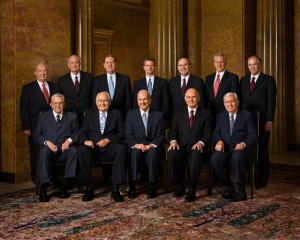
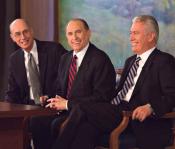
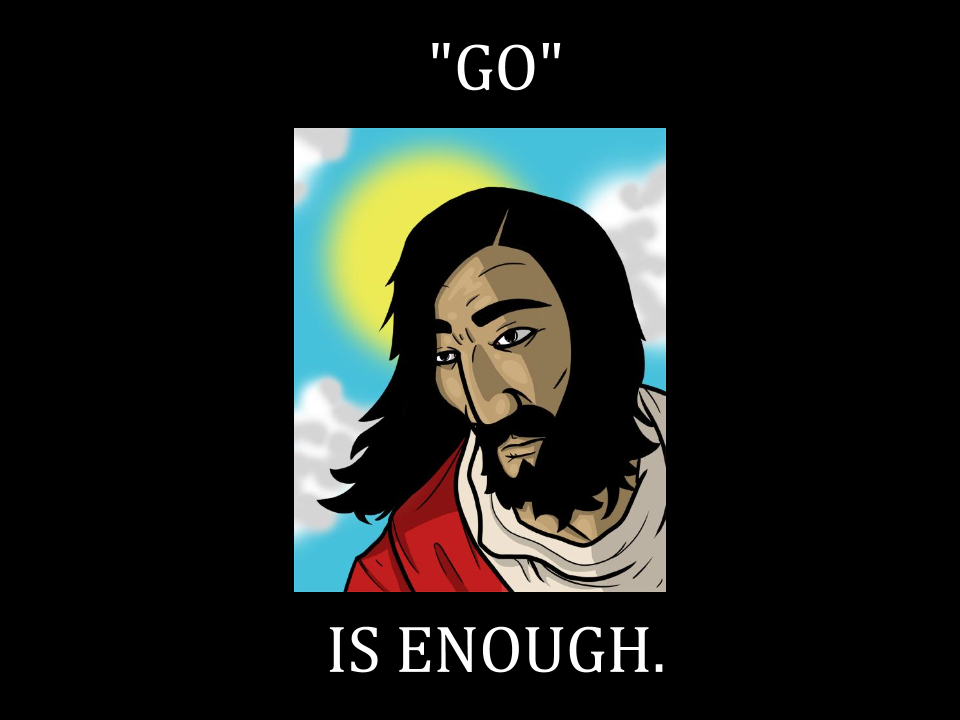

 In a joint press conference with Google and The Corporation of the President of The Church of Jesus Christ of Latter-day Saints, representatives from both corporations announced an exciting new translation project. Google will use its
In a joint press conference with Google and The Corporation of the President of The Church of Jesus Christ of Latter-day Saints, representatives from both corporations announced an exciting new translation project. Google will use its 
